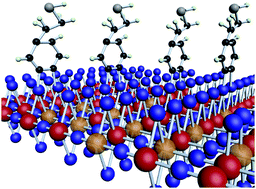Defect-engineered TiO2 nanotube photonic crystals for the fabrication of near-infrared photoelectrochemical sensor†
Abstract
The use of photoelectrochemical (PEC) sensors, with their outstanding advantages of remarkable sensitivity, inherent miniaturization, portability and easy integration, is becoming a promising analytical detection technique. The rational design of PEC materials and convenient establishment of PEC analysis platforms have given this technique tremendous popularity in both analytical and medical communities for biomolecule detection. However, most of the current efforts in the development of PEC analysis have been made with ultraviolet and visible light (UV-vis) as light source, which are detrimental to biomolecules because of their high energy. On the contrary, near-infrared (NIR) light is biocompatible and is available for in vivo detection. Herein, a prototype of NIR light-responsive PEC analysis platform is first proposed with defect-engineered TiO2 nanotube photonic crystals as photoelectrode and dopamine as target molecule. The coupled strategies of defect engineering for electronic structure modification and morphology design for photon manipulation open up a distinctive avenue to not only implement sensitive NIR PEC detection of dopamine but also have potential multi-target detection ability by integrating bio-recognition units, thus promoting NIR PEC analysis as a versatile analysis method.



 Please wait while we load your content...
Please wait while we load your content...